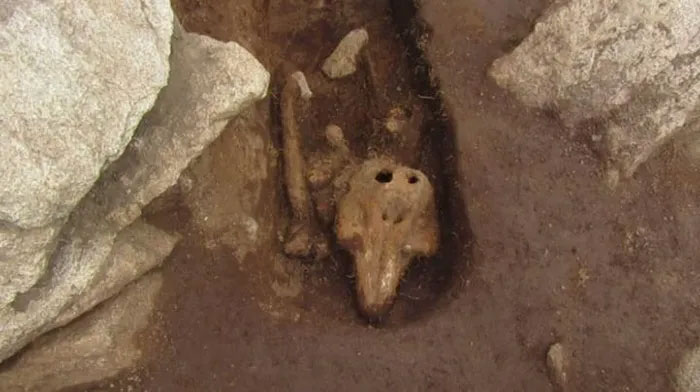Scientists Stunned by Discovery of Dolphin Remains in Deep Burial Site
The burial site was discovered in September 2017 on Chapelle Dom Hue, an island off the coast of Guernsey, England. This island was once home to medieval monks.
Researchers found a series of medieval pottery and prehistoric flint at Chapelle Dom Hue but were astonished to uncover the mysterious burial site.
“It contains the remains of a dolphin. The animal appears to have been butchered before being placed in a rectangular pit made from gneiss stones found on the island,” said Philip de Jersey, a researcher from the University of Oxford.

Dolphin skeleton. (Photo: Guernsey Archaeology)
De Jersey and his colleagues initially believed the burial was the final resting place of a medieval monk.
The grave was oriented northeast/southwest and was found near the ruins of a structure that archaeologists believe may have been a chapel.
According to de Jersey, the pottery found at the burial site could date back to the 14th century.
“Dolphin was a popular dish in medieval times, and there are many references to it being hunted and consumed around the 13th and 14th centuries. However, the question remains as to why a grave was dug for an animal after it had already been eaten,” he stated.
This researcher expressed curiosity about why the dolphin’s remains were not simply thrown back into the sea, which was just a few steps away.
“It is possible that this pit was a failed experiment in preserving meat, perhaps packed in salt. Further analysis of the soil samples could clarify this,” de Jersey noted.
The pH level of the soil surrounding the dolphin’s remains has made it difficult for researchers to determine its age.
“We will attempt to analyze a part of the skull that is somewhat better preserved,” de Jersey added.


















































